Plants
Plants are living organisms that belong to the kingdom Plantae. They are essential for life on Earth as they provide oxygen, food, and habitats for other organisms. Plants come in various shapes and sizes, from tiny mosses to towering trees.
Structure of a Plant
A typical plant consists of roots, stems, leaves, flowers, and fruits. The roots anchor the plant in the soil and absorb water and nutrients. The stem provides support and transports water and nutrients throughout the plant. Leaves are the main site for photosynthesis, where plants convert sunlight into energy. Flowers are the reproductive structures of the plant, and fruits contain seeds for reproduction.
Life Cycle of a Plant
Plants have a life cycle that includes seed germination, growth, reproduction, and death. The life cycle varies among different plant species but generally involves the production of seeds through pollination and fertilization.
Types of Plants
There are various types of plants, including flowering plants (angiosperms), non-flowering plants (gymnosperms), ferns, mosses, algae, and more. Each type of plant has unique characteristics and reproductive strategies.
Plant Adaptations
Plants have evolved various adaptations to thrive in different environments. These adaptations may include specialized root structures for water absorption, thorns for protection, or unique leaf shapes for efficient photosynthesis.
Importance of Plants
Plants play a crucial role in the ecosystem by producing oxygen, providing food for humans and animals, controlling the water cycle, and maintaining soil health. They are also a source of medicine, building materials, and aesthetic beauty.
Study Guide
- What are the main parts of a plant and their functions?
- Explain the process of photosynthesis in plants.
- Compare and contrast the life cycle of a flowering plant and a non-flowering plant.
- List and describe the different types of plants.
- Discuss the importance of plants in the ecosystem and human life.
Understanding the structure, life cycle, types, and importance of plants is essential for appreciating their role in the natural world and human society.
[Plant] Related Worksheets and Study Guides:
.◂Science Worksheets and Study Guides Fourth Grade. Plant Structure and function

 Worksheet/Answer key
Worksheet/Answer key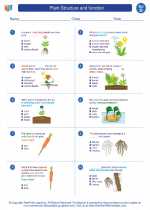
 Worksheet/Answer key
Worksheet/Answer key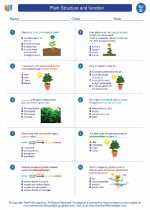
 Worksheet/Answer key
Worksheet/Answer key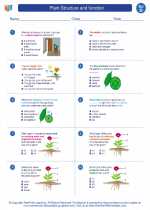
 Vocabulary/Answer key
Vocabulary/Answer key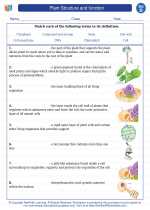
 Vocabulary/Answer key
Vocabulary/Answer key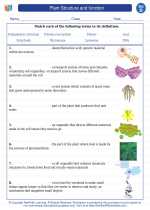
 Vocabulary/Answer key
Vocabulary/Answer key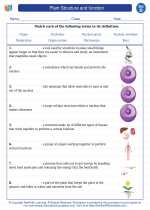
 Vocabulary/Answer key
Vocabulary/Answer key
